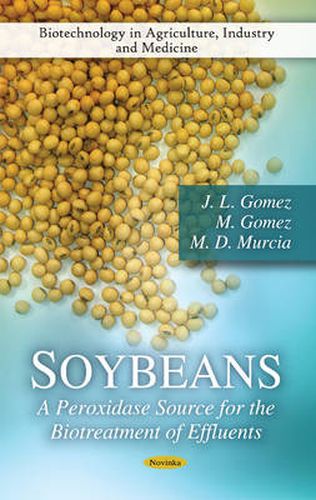Readings Newsletter
Become a Readings Member to make your shopping experience even easier.
Sign in or sign up for free!
You’re not far away from qualifying for FREE standard shipping within Australia
You’ve qualified for FREE standard shipping within Australia
The cart is loading…






Among the numerous applications of soybean, its use as a source of soybean peroxidase is of particular interest in the area of bioremediation. Peroxidases are oxidoreductase enzymes with a wide variety of substrate specificity, that catalyse, in the presence of hydrogen peroxide, the oxidative polymerisation of different pollutants widely found in industrial effluents. These pollutants can be highly toxic for both human beings and the environment and they must be removed from wastewater before they are discharged into the environment. The use of enzymes is presented as an alternative method for the industrial wastewater treatment when conventional physical, chemical and biological methods such as adsorption in carbon active, chemical oxidation and micro-organism treatment may be ineffective. This book discusses the various advantages of soybeans as a source for the biotreatment of hazardous effluents.
$9.00 standard shipping within Australia
FREE standard shipping within Australia for orders over $100.00
Express & International shipping calculated at checkout
Among the numerous applications of soybean, its use as a source of soybean peroxidase is of particular interest in the area of bioremediation. Peroxidases are oxidoreductase enzymes with a wide variety of substrate specificity, that catalyse, in the presence of hydrogen peroxide, the oxidative polymerisation of different pollutants widely found in industrial effluents. These pollutants can be highly toxic for both human beings and the environment and they must be removed from wastewater before they are discharged into the environment. The use of enzymes is presented as an alternative method for the industrial wastewater treatment when conventional physical, chemical and biological methods such as adsorption in carbon active, chemical oxidation and micro-organism treatment may be ineffective. This book discusses the various advantages of soybeans as a source for the biotreatment of hazardous effluents.